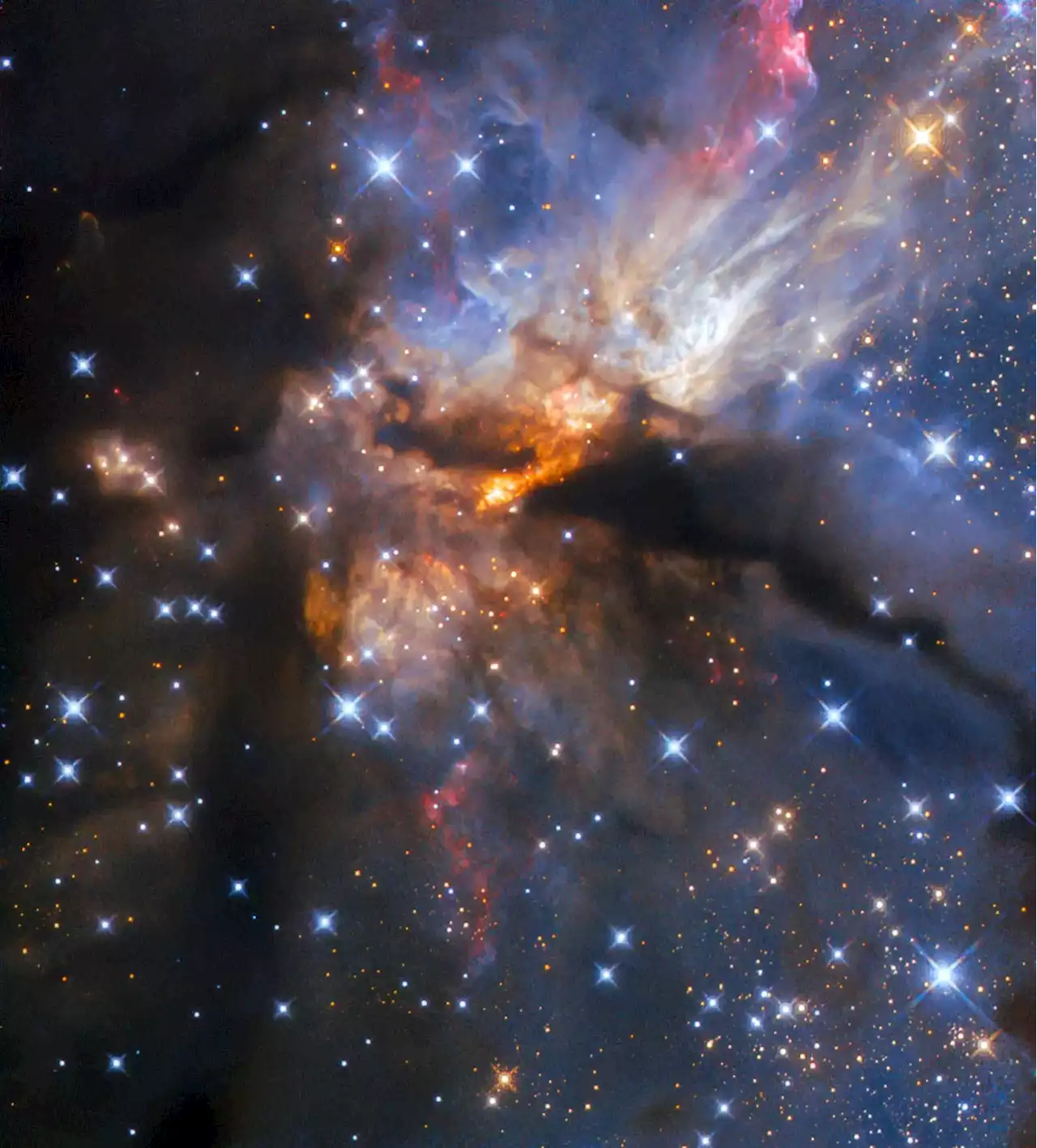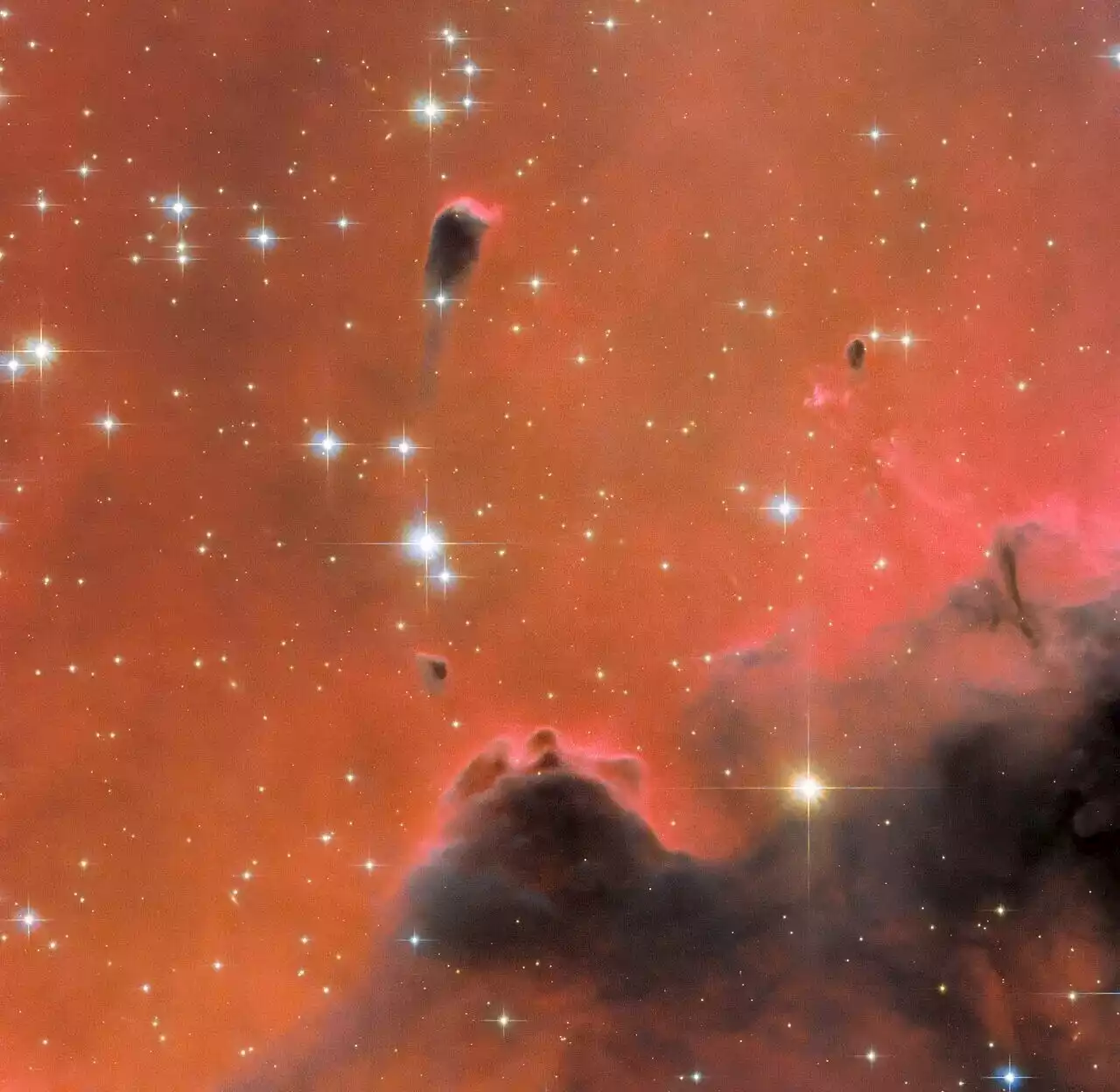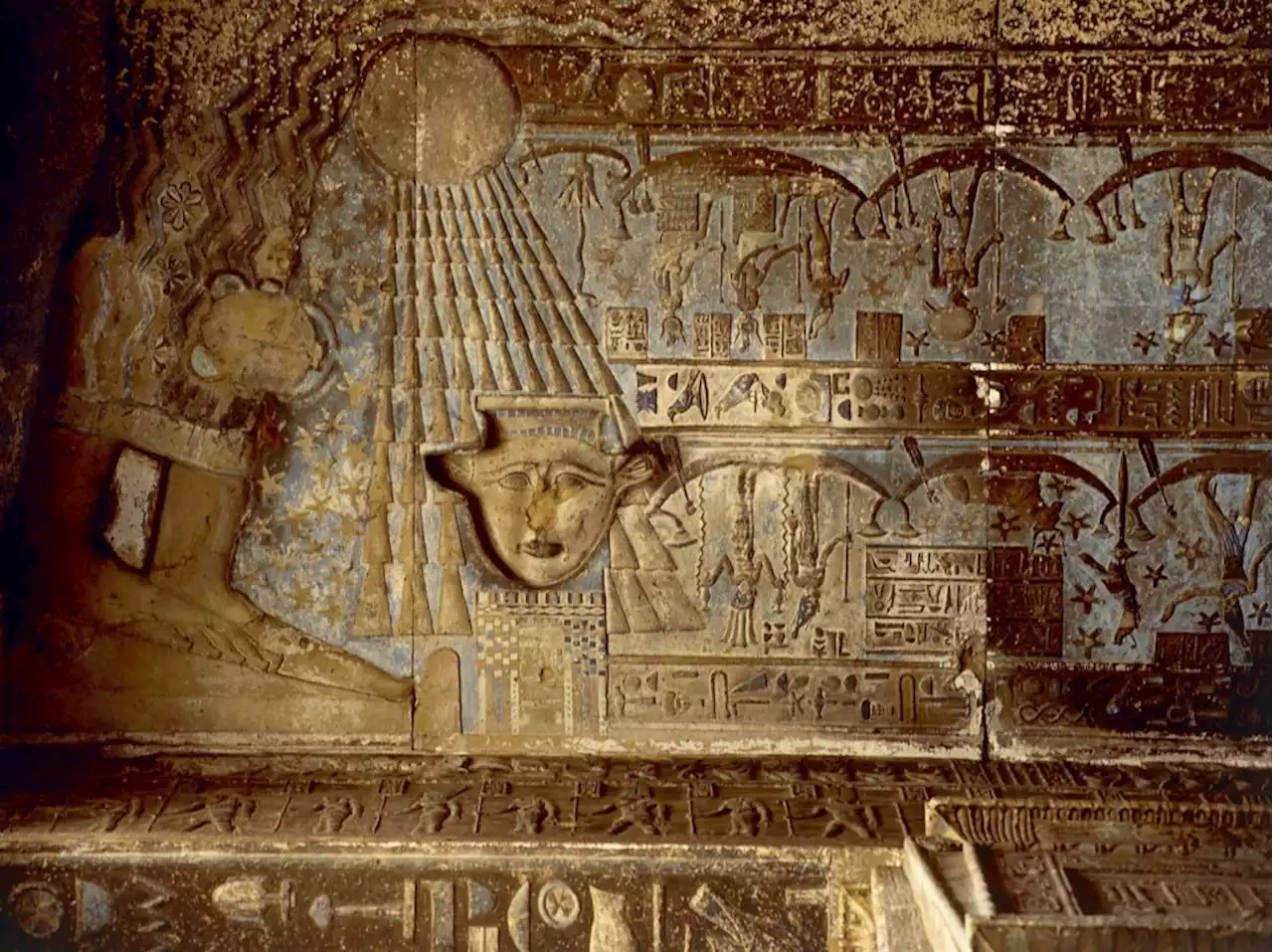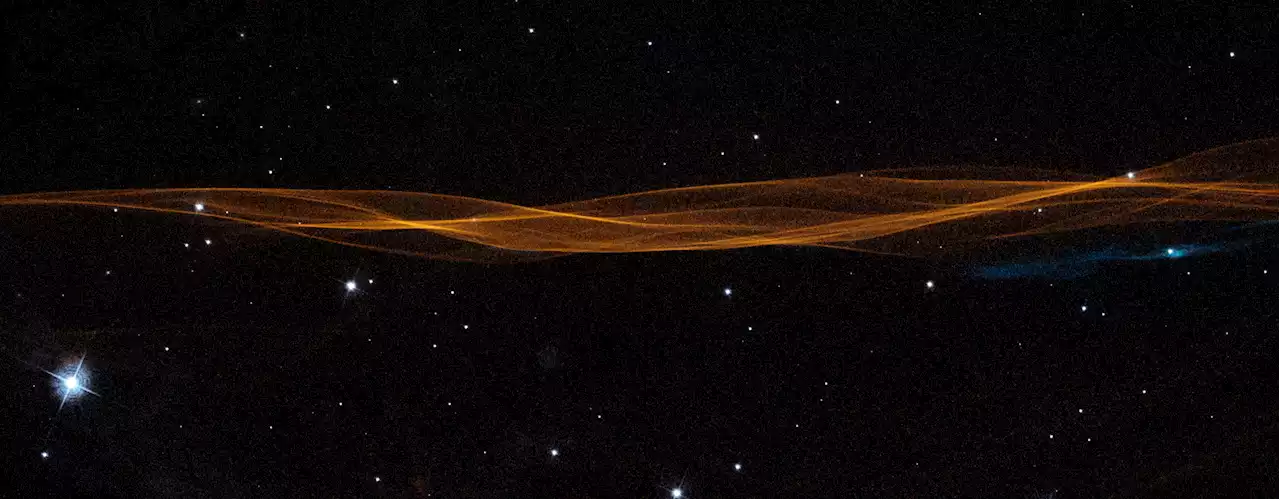Thanks to the Hubble's longevity, astronomers have observed this expanding supernova remnant for two decades.
This is a Hubble image of a very small region of the Cygnus Loop, a supernova remnant. The image shows a small part of the leading edge of the expanding bubble. Image Credit: NASA, ESA, Ravi Sankrit
Some new research based on Hubble’s observation of the Cygnus Loop was published in The Astrophysical Journal in May. It’s based on a northeastern section of the Loop that the Hubble has observed over the last two decades. It’s titled ““The Hubble images are spectacular when you look at them in detail.”“Hubble is the only way that we can actually watch what’s happening at the edge of the bubble with such clarity,” said Sankrit. “The Hubble images are spectacular when you look at them in detail.
The Hubble observed this part of the Cygnus Loop in three epochs that spanned 22 years. Three of the epochs observed the H-alpha, but only two observed another spectral line called OIII, which is doubly-ionized oxygen. It’s another common spectral line in astronomy because nebulae contain concentrated levels of OIII. It’s also caused by ionization and an electron changing energy states and releasing a photon. In OIII’s case, the photon’s energy level makes it appear blue.
“Those wiggles arise as the shock wave encounters more or less dense material in the interstellar medium.”This figure from the study illustrates the rippled sheet morphology in the filament. Each labelled red box is a projection region, with the numbers at the top of each representing proper motions. Each blue arrow indicates the leading edges of shocks at different locations in the filament. The image shows that the shock fronts have retained their overall structure so far without changes.
The Cygnus Loop’s overall shape is shell-like. But on the SNR’s perimeter, there are notable places where the outgoing shock wave forms knots. These are shocks, and there are two types: radiative and non-radiative. Radiative ones radiate energy, and non-radiative ones don’t. A third type, transitional shocks, is transitioning from non-radiative to radiative.
United States Latest News, United States Headlines
Similar News:You can also read news stories similar to this one that we have collected from other news sources.
 Hubble Captures a Breathtaking Light Show From a Powerful Protostellar JetThis breathtaking image from the Hubble Space Telescope shows a region called G35.2-0.7N, which is known as a hotbed of high-mass star formation. The kind of stars that form here are so massive that they will end their lives as destructive supernovae. However, even as they form they greatly impact t
Hubble Captures a Breathtaking Light Show From a Powerful Protostellar JetThis breathtaking image from the Hubble Space Telescope shows a region called G35.2-0.7N, which is known as a hotbed of high-mass star formation. The kind of stars that form here are so massive that they will end their lives as destructive supernovae. However, even as they form they greatly impact t
Read more »
![]() Astronomers Want More Disco Balls to be Installed in ObservatoriesToo long has the mirror ball been overlooked as a scientific instrument.
Astronomers Want More Disco Balls to be Installed in ObservatoriesToo long has the mirror ball been overlooked as a scientific instrument.
Read more »
 Astronomers worry about bright object in night sky'The startling conclusion is that the BlueWalker 3 satellite is one of the brightest things in the sky,' astronomer Meredith L. Rawls told Newsweek.
Astronomers worry about bright object in night sky'The startling conclusion is that the BlueWalker 3 satellite is one of the brightest things in the sky,' astronomer Meredith L. Rawls told Newsweek.
Read more »
 Astronomers alarmed by satellite that outshines all but seven starsObservations collected from telescopes around the world confirm that the communications satellite BlueWalker 3 outshines all but seven stars, posing huge problems for astronomy
Astronomers alarmed by satellite that outshines all but seven starsObservations collected from telescopes around the world confirm that the communications satellite BlueWalker 3 outshines all but seven stars, posing huge problems for astronomy
Read more »
 Hubble views a glistening red nebula Westerhout 5Just in time for the fall foliage season, this image from the NASA/ESA Hubble Space Telescope features a glistening scene in red. It reveals a small region of the nebula Westerhout 5, which lies about 7,000 light-years from Earth. Suffused with bright red light, this luminous image hosts a variety of interesting features, including a free-floating Evaporating Gaseous Globule (frEGG).
Hubble views a glistening red nebula Westerhout 5Just in time for the fall foliage season, this image from the NASA/ESA Hubble Space Telescope features a glistening scene in red. It reveals a small region of the nebula Westerhout 5, which lies about 7,000 light-years from Earth. Suffused with bright red light, this luminous image hosts a variety of interesting features, including a free-floating Evaporating Gaseous Globule (frEGG).
Read more »
 What Ancient Egyptians Knew About Meteorites—Long Before Modern AstronomersAn Egyptologist’s study of hieroglyphic texts revealed ancient Egyptians likely understood the celestial origins of iron-rich meteorites.
What Ancient Egyptians Knew About Meteorites—Long Before Modern AstronomersAn Egyptologist’s study of hieroglyphic texts revealed ancient Egyptians likely understood the celestial origins of iron-rich meteorites.
Read more »
